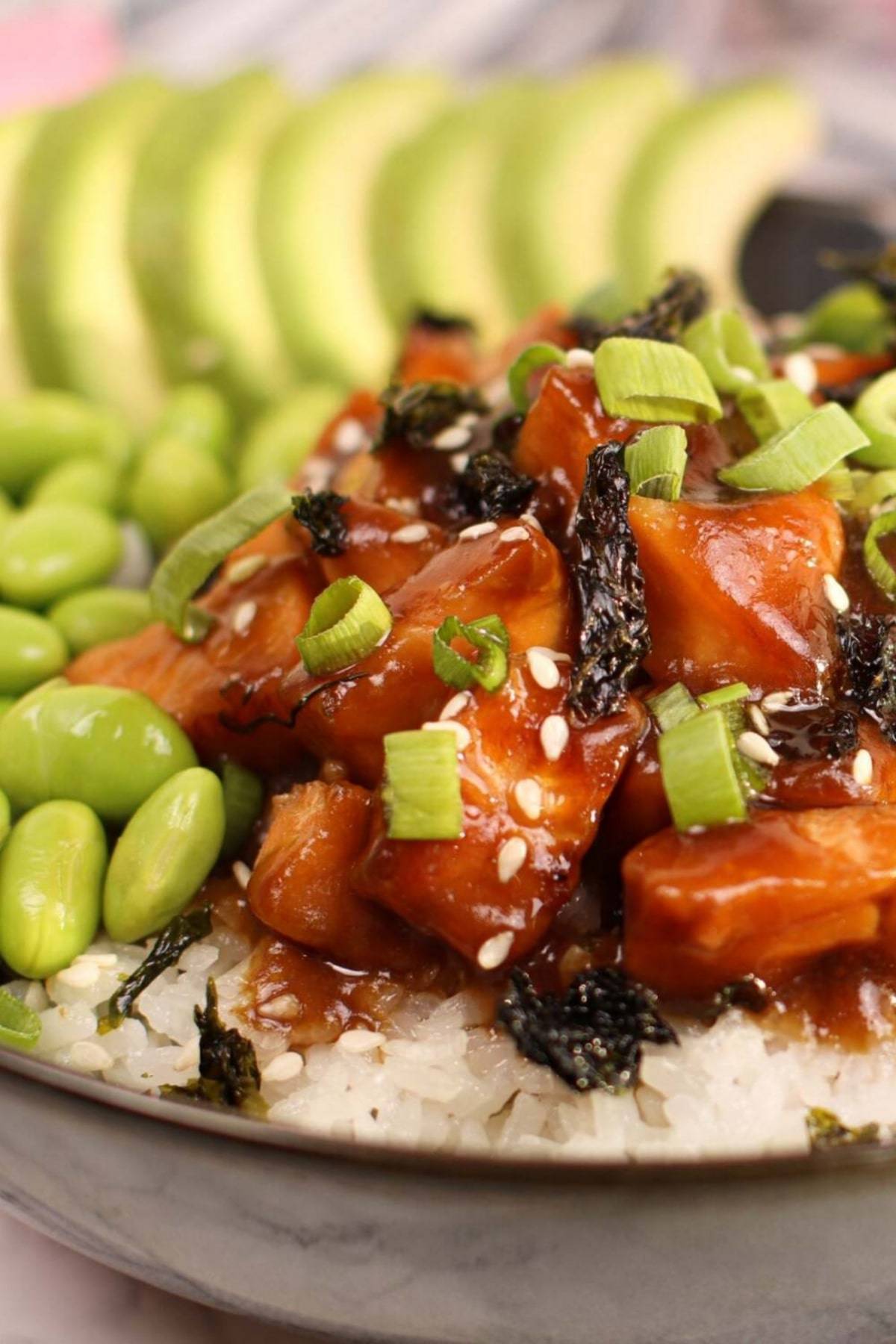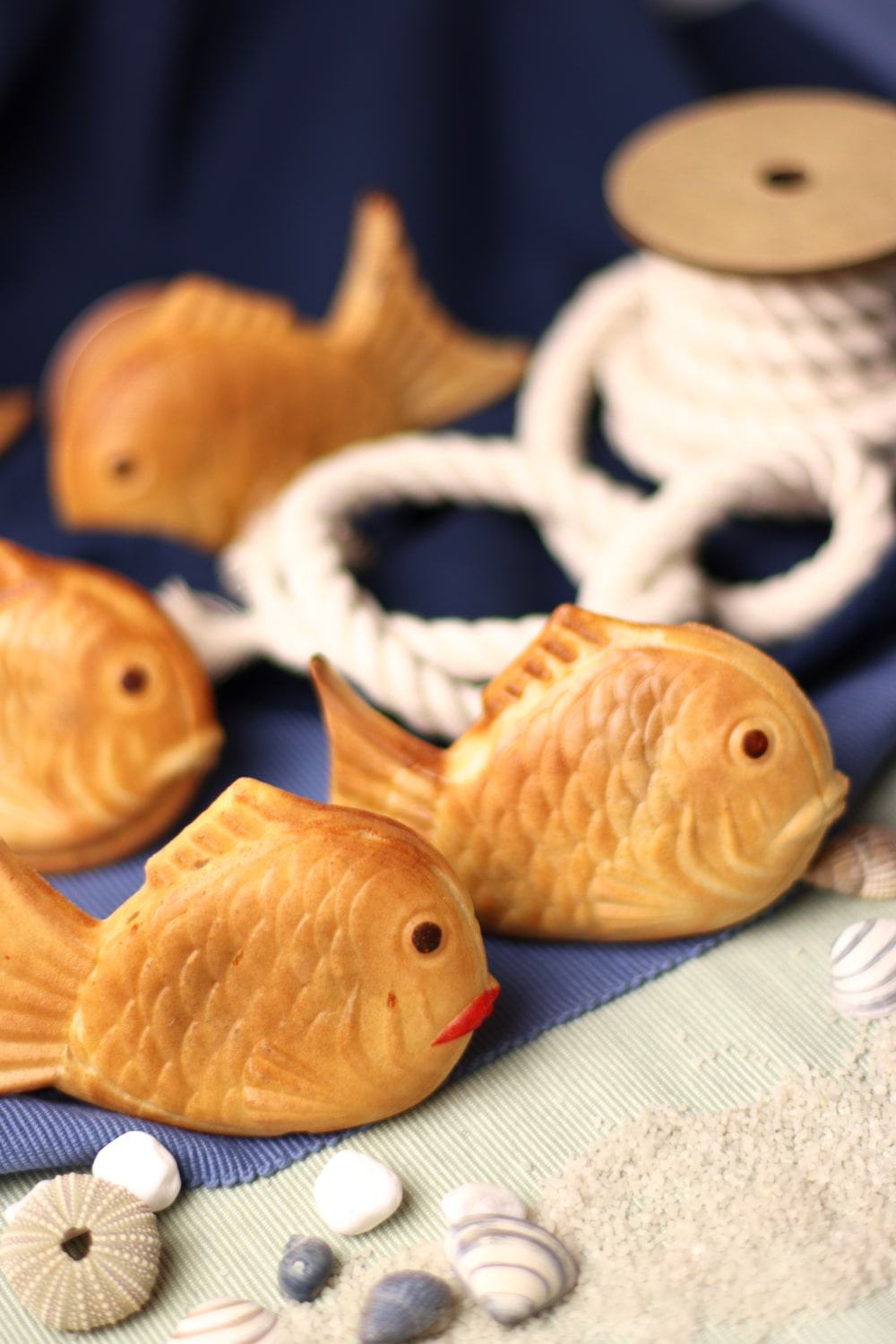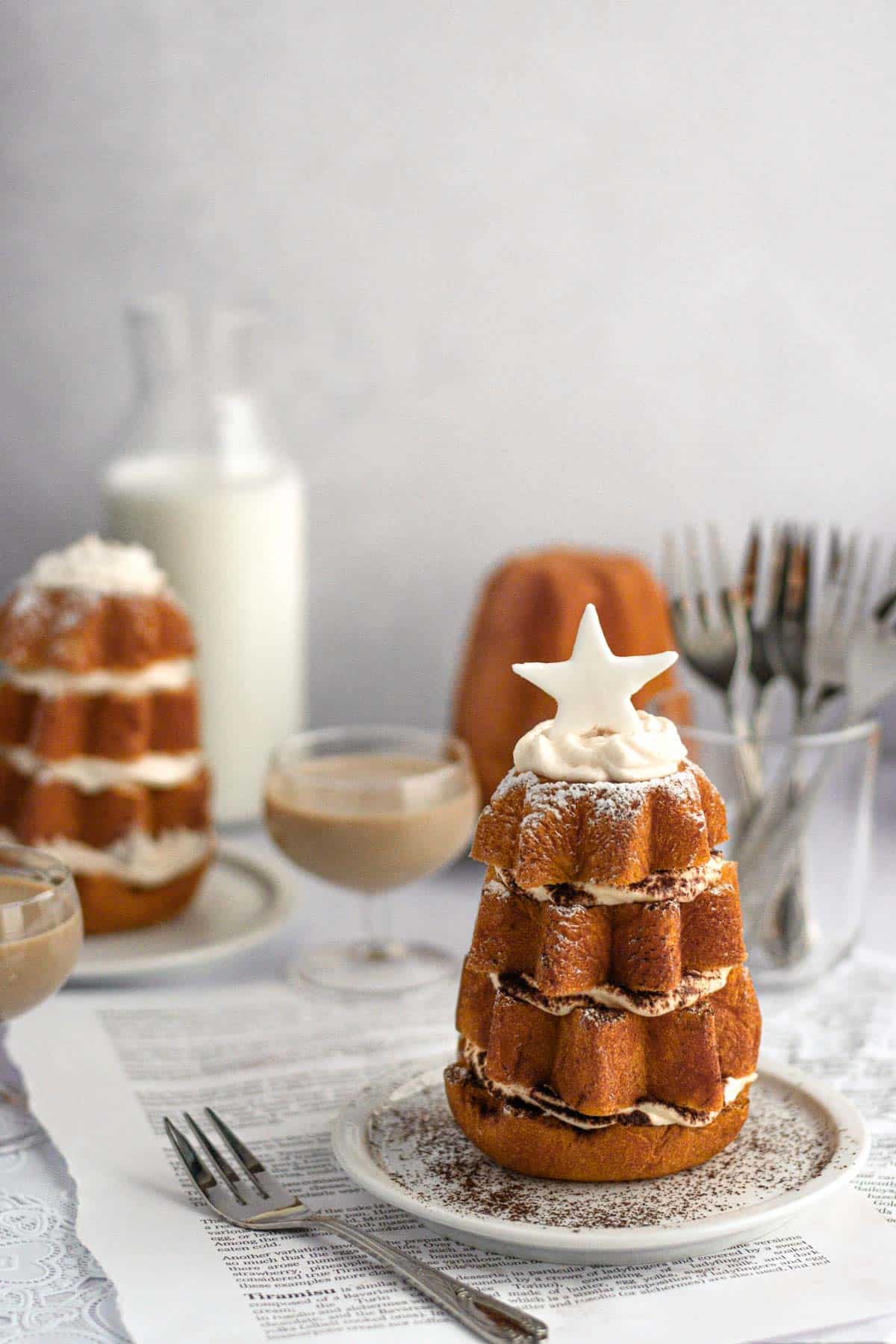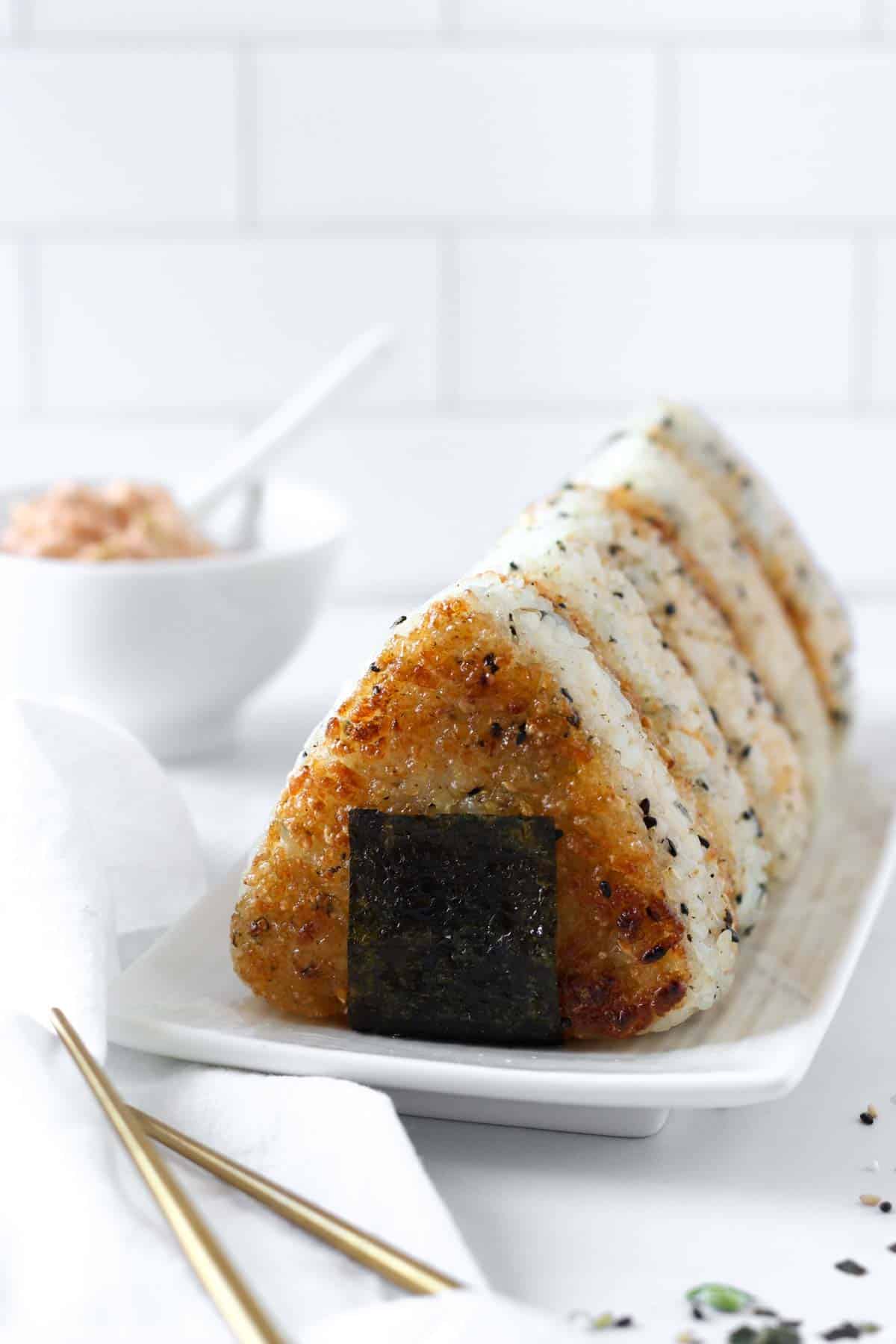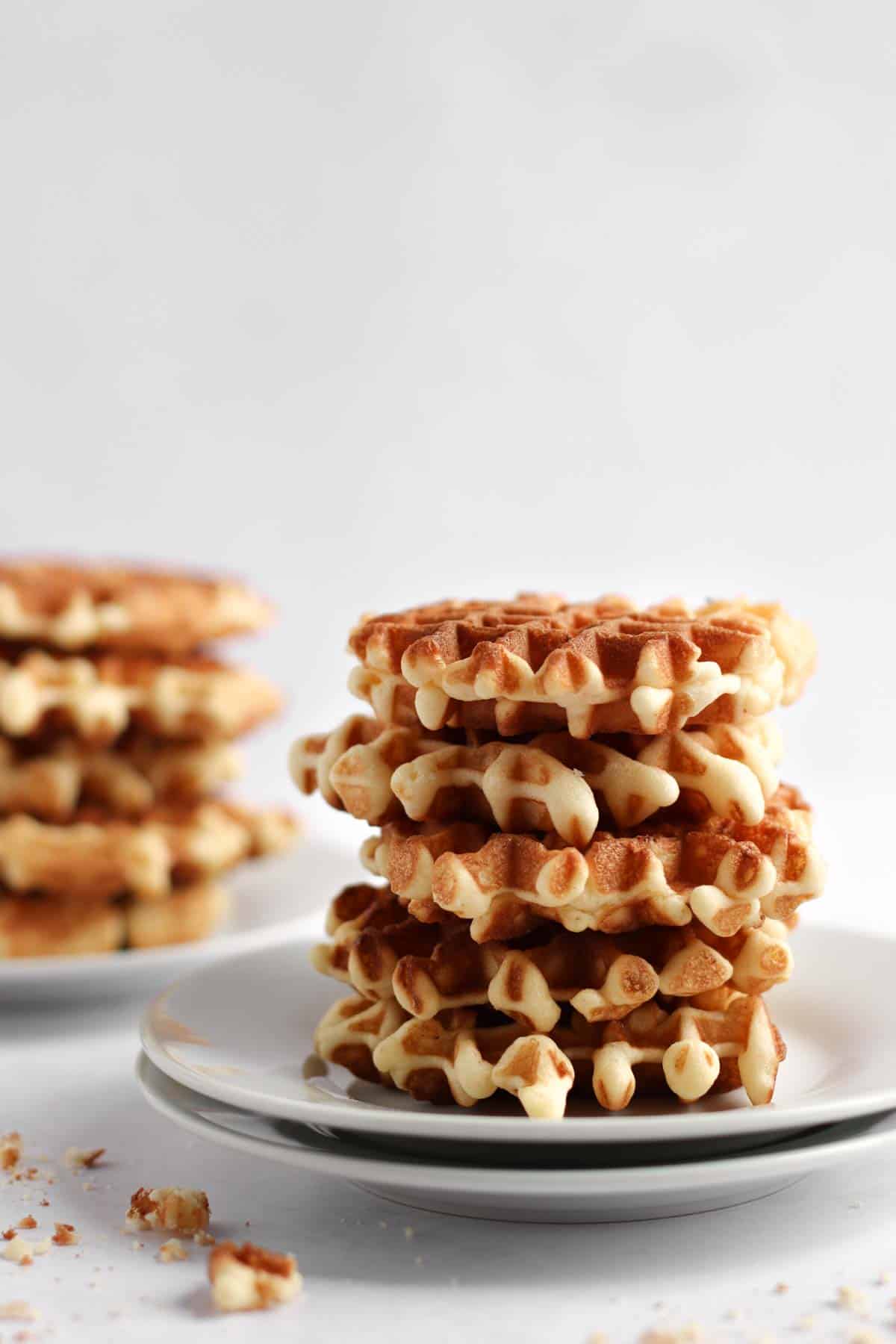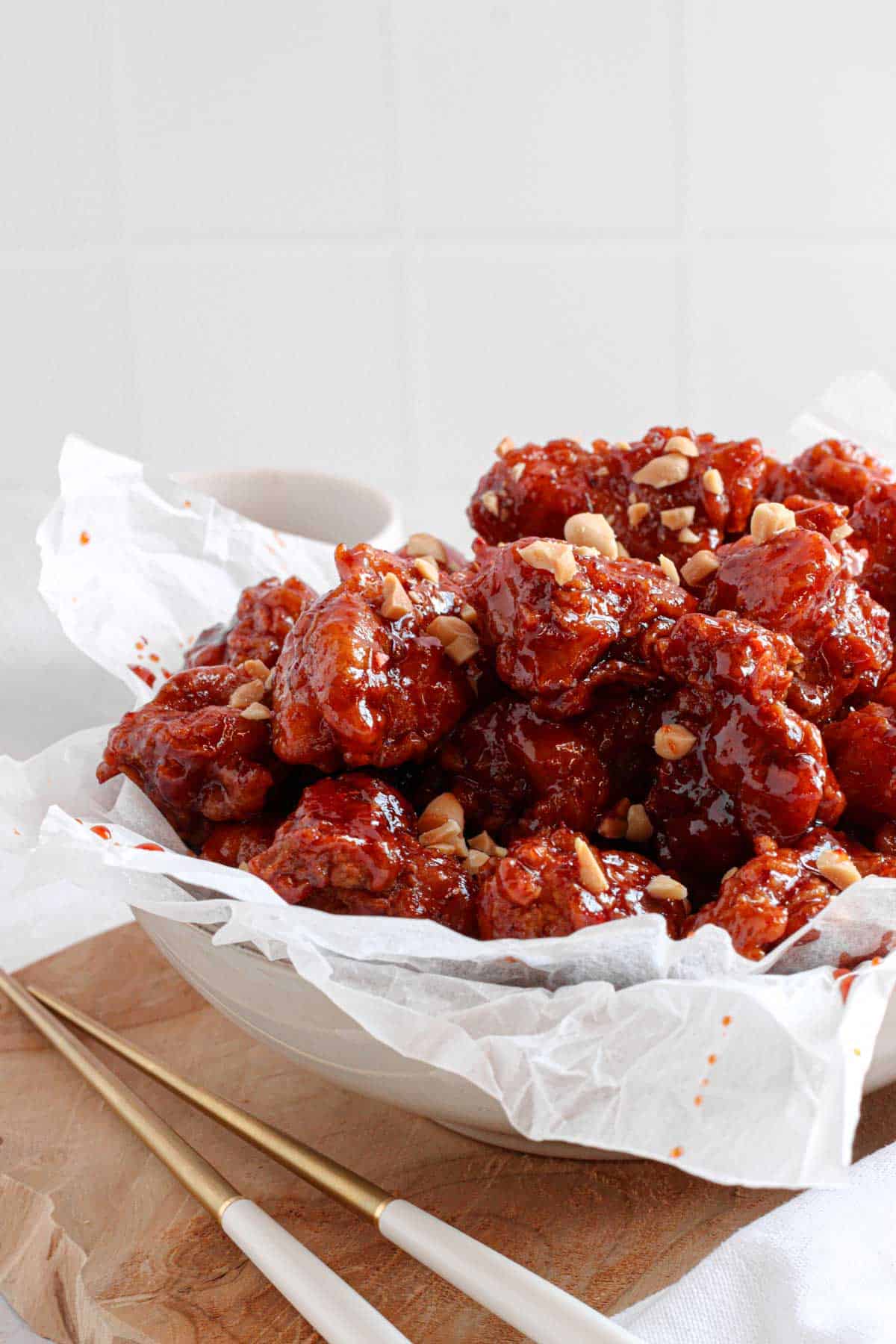How to Make Boba Pearls at Home (Tapioca Pearls from Scratch)
This post may contain affiliate links. Please read my disclosure policy for details.
Do you need tapioca pearls to make your boba, but can’t find them in stores around you? Don’t worry! With just 4 simple ingredients, you can make boba pearls from scratch. You’ll have as many boba pearls as needed for your Strawberry Matcha Boba, Oreo Milk Tea, Bubble Shake or else.
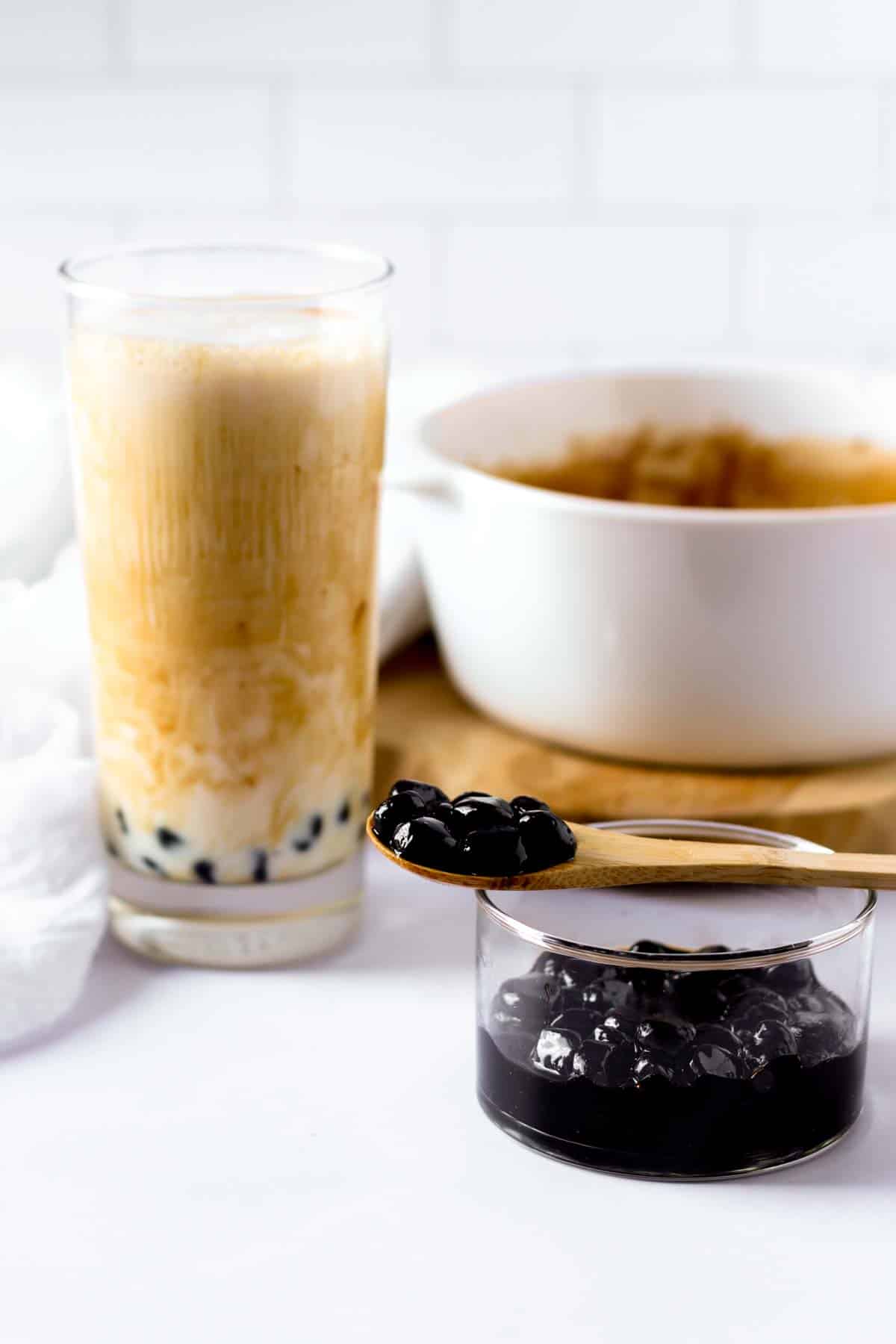
Hold up, have you tried bubble tea yet? If not, you’re in for a treat!
Bubble tea started gaining massive popularity in Taiwan in the 1980s. And boy, did it quickly spread worldwide! Picture this – a refreshing tea base, sweetened milk or fruity flavors, and surprise, surprise – those chewy boba pearls! The combo of flavors and textures made bubble tea an instant hit, and it’s still going strong!
Every time I pass by a bubble tea shop, I can’t resist grabbing one for myself! I love trying out different flavors, but you know what? My all-time favorite has to be taro bubble tea.
But you know, these past few years, it feels like tapioca pearls have been playing hide-and-seek in certain parts of the world, making it a real challenge to find them in stores. Particularly when the pandemic hit, it was quite hard to find them! That’s when I decided to take matters into my own hands and learn how to make them from scratch!
What are tapioca pearls?
Tapioca pearls are small, chewy balls made from tapioca starch, which is derived from the root of the cassava plant (Manihot esculenta). The cassava plant is native to South America, but its cultivation has spread to various parts of the world, including Asia and Africa. Tapioca pearls are a popular ingredient that you’ll find in desserts and beverages, especially in bubble tea (also known as boba, bubble tea or pearl milk tea).
Tapioca pearls themselves have a mild, neutral flavor, almost tasteless. They act as carriers for the flavors of the beverages and sweet syrups they are immersed in. The enjoyment of tapioca pearls mainly comes from their unique chewy texture, which contrasts well with the liquid component of the drink.
The texture of tapioca pearls is what sets them apart and makes them popular in various drinks and desserts. When cooked, the pearls become soft on the outside with a chewy, slightly gummy texture.
WHY YOU’LL LOVE THIS RECIPE
Ingredients
- tapioca starch – you can find tapioca starch in most Asian stores. Make sure not to substitute it with any other starch.
Tapioca starch, aka tapioca flour, is a starchy white powder extracted from the cassava root. It is obtained by grating cassava roots, pressing the pulp to extract starchy liquid, settling, and drying the separated starch. Widely used in cooking and baking, it serves as a gluten-free thickener, stabilizer, and binding agent.
- brown sugar – using brown sugar in boba pearls offers a distinct flavor and color profile compared to using white sugar. Brown sugar is a type of sugar that contains molasses, which gives it its characteristic brown color and rich, caramel-like taste.
- water
- black food coloring – if the color of the boba pearls isn’t important to you, black food coloring isn’t necessary. However, if you want the tapioca pearls to have the classic black appearance like the ones you buy from boba shops, then you’ll need to add food coloring.
To achieve black tapioca pearls, you can use either liquid, gel or powder food coloring. Start with a small amount and gradually add more until you achieve the desired color. Ensure the food coloring is safe for consumption and doesn’t alter the taste or texture of the boba pearls.

How To Make boba pearls?
Make the boba pearls
- In a pot, add brown sugar and water. Heat it over medium-high heat until the sugar has completely dissolved, and the mixture comes to a boil. If you’re making black boba pearls, add the black food coloring at this stage.
- Reduce the heat to low and add half of the tapioca starch to the pot. Quickly stir for about 10 seconds until the mixture forms a smooth and elastic paste (be careful not to add more than half of the tapioca starch, as it could result in a dry consistency and make it difficult to incorporate the rest of the tapioca starch).
- Remove the pot from the heat and add the remaining tapioca starch to the mixture. Mix well.

Note:
If you accidentally add too much tapioca starch to the water-sugar syrup during the first step of making boba pearls, and the mixture becomes too dry and difficult to incorporate more starch, don’t worry! If the dough doesn’t have the desired consistency like the first photo above, there are a couple of solutions to salvage it:
- Add water gradually: if the dough becomes too dry, you can try adding a small amount of water, a teaspoon at a time, and mix it thoroughly until the dough becomes smoother and more pliable. Be careful not to add too much water at once, as it can quickly make the dough too wet.
- Start over: if the dough becomes completely unworkable (yes, I’ve been there!) you might have to start over with a new batch.
- Transfer the dough onto a flat and clean surface. Using your hands (wear gloves as the dough is hot), knead the dough until it forms a smooth and tacky consistency. Work quickly, as the dough will become harder to knead as it cools down.
- Divide the dough into 8 equal parts.
- Roll each portion into a long, thin log approximately 6 mm / 0.24 inches thick. Using a dough cutter or knife, cut small pieces about 6 mm / 0.24 inches in size.
TIP: Instead of cutting all of them at once, try cutting 10-15 pieces at a time to prevent them from drying out and make the rolling process easier.
- Take each piece of dough and roll it into a small ball in your hands.
- Once all the balls are shaped, place them in a bowl or container with tapioca starch and coat the balls thoroughly to prevent them from sticking to each other.
- Transfer the balls to a strainer and shake them to drain any excess tapioca starch.
- Transfer the coated boba pearls to a container. Let them rest in the open-lid container for 1 day to allow them to dry out.
- This recipe yields enough boba pearls for 3 drinks. If you’re not making all 3 drinks immediately, you can store the dried, uncooked boba pearls in an airtight container in a dry and cool area.

Cook the boba pearls
- In a pot, bring water to a boil over medium-high heat. Add the tapioca pearls to the boiling water and stir gently to prevent them from sticking to each other.
- Boil the tapioca pearls for 20 minutes. Note that depending on how thick you made the boba pearls, you may need to adjust the cooking time.
- Once the tapioca pearls are cooked, remove the pot from the heat, cover it with a lid, and let the boba sit for 10 minutes until they become translucent and soft.
- Drain the pearls through a strainer and rinse them under cold water. This will prevent them from sticking to each other and stop the cooking process, causing them to shrink back to their original size.
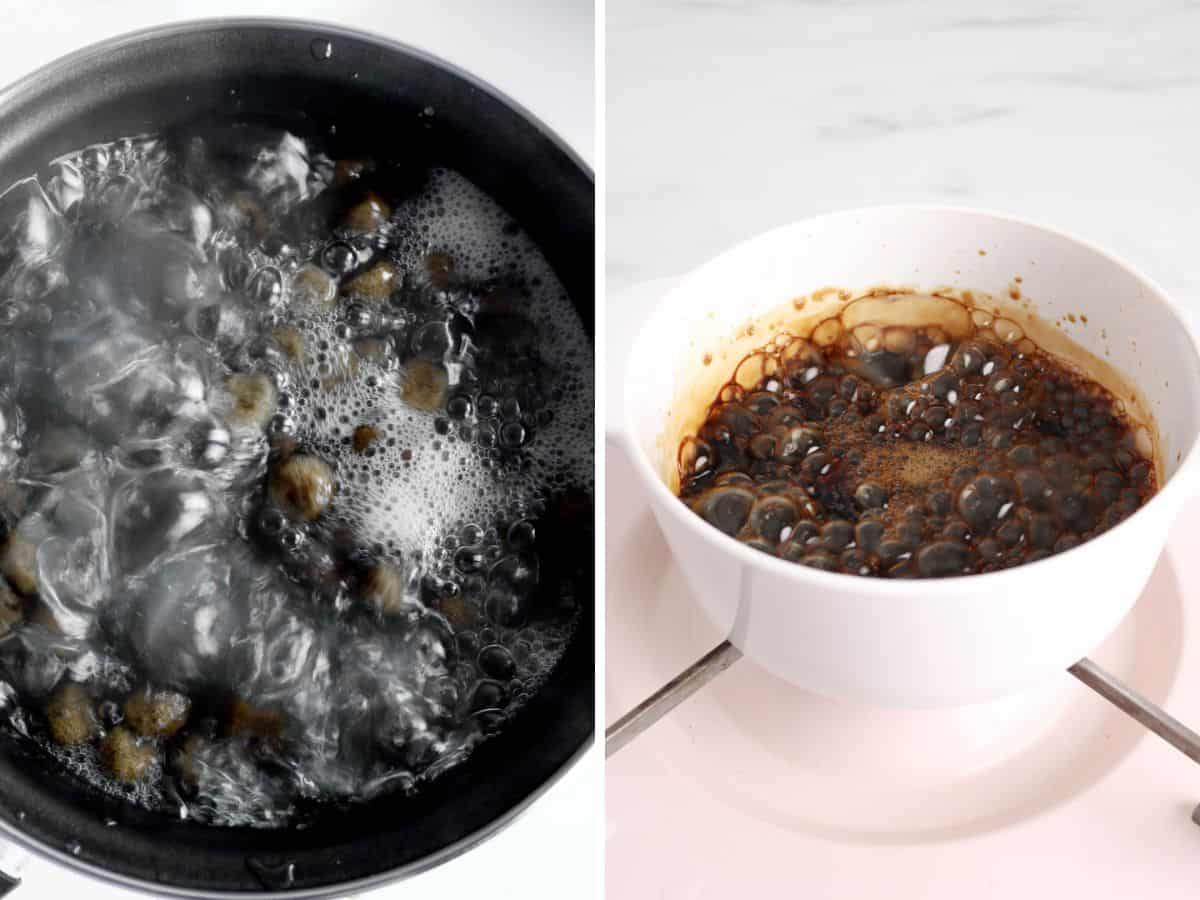
Make the sugar syrup (optional)
- You can mix the pearls with brown sugar syrup to use in any of your bubble tea.
- In a pot, on medium heat, bring water and brown sugar to a boil until the sugar is completely dissolved and until the mixture thickens and becomes syrup. Add the pearls to the pan and stir them gently to coat them with the melted syrup.
- Serve the brown sugar tapioca pearls in your favorite drink, such as milk tea or fruit tea.
homemade vs store-bought boba pearls
The difference between fresh homemade boba pearls and store-bought ones lies in several aspects.
Homemade boba pearls are fresher and have a more delicate texture, offering superior chewiness and bounce. Additionally, making boba pearls from scratch allows for flavor customization and the use of high-quality ingredients.
However, making homemade pearls can be time-consuming, while store-bought pearls offer convenience and accessibility. If you prefer to buy them, I recommend these tapioca pearls. They boast great quality and cook in just 5 minutes
Substitutions
- Sugar – Instead of using brown sugar, you can use white granulated sugar or coconut sugar for a different flavor profile.
- Black food coloring – If you prefer not to use food coloring, you can skip it altogether. Your boba pearls won’t be black, but they will still be delicious and chewy. Alternatively, if you want to give them a different color, feel free to add another food coloring hue.
- Flavor extracts – Instead of using black food coloring, you can add flavor extracts like vanilla, almond, or coconut to infuse the boba pearls with different tastes.
How To Store boba pearls?
- Cooked boba pearls: place the boba pearls in an airtight container and store them in the refrigerator for up to 2 days. I recommend storing them in the brown syrup to prevent them from sticking to each other. I don’t recommend freezing cooked boba pearls as they may lose their soft and chewy texture. When ready to be consumed, reheat them in a small pot until the syrup starts to boil.
- Dry boba pearls: once you have shaped the pearls and coated them with tapioca starch, place the pearls in a large tray to prevent them from overlapping. Let them dry for a day. Then, transfer them to an airtight container and store them in a cool, dry place away from light. They can be stored for up to 6 months.
Emma’s Tips
- Measure ingredients accurately – For consistent results, measure the ingredients precisely using a kitchen scale rather than relying on cups.
- Knead the dough well – Properly knead the dough until it becomes smooth and tacky. This step is crucial for achieving the desired chewy texture of the boba pearls.
- Work with small batches – If you’re doubling this recipe, I recommend making several separate batches instead of multiplying the quantities. This approach prevents the dough from drying out too quickly, making it easier to shape the boba pearls.
- Uniform pearl sizes – Try to make the boba pearls as uniform in size as possible to ensure even cooking and a consistent texture.
- Use a non-stick surface – When shaping the boba pearls, use a non-stick surface or lightly dust the surface with tapioca starch to prevent sticking.
- Check for doneness – Test a boba pearl for doneness by cutting it open. The center should be fully cooked without any raw, starchy core.
- Enjoy fresh – boba pearls are best when enjoyed fresh. Consume them within a few hours of cooking for the ultimate chewy texture and taste.
- Store properly – If you have leftovers, store cooked boba pearls in the refrigerator in the syrup to maintain their softness. Consume them within a day or two for the best quality.
RECIPE FAQ

More recipes
RECIPES IN YOUR INBOX? Don’t forget to subscribe to my newsletter to receive the latest recipe updates delivered for free directly to your inbox! Oh, and you will also find me on Youtube, Instagram, Facebook and TikTok. Come say hi and leave me a message, it’s always a pleasure to connect with all of you!
Thanks so much for stopping by! xx


How to Make Boba Pearls at Home (Tapioca Pearls from Scratch)
Equipment
- spatula
- strainer
- food gloves
Ingredients
- 120 g tapioca starch | + 2 tbsp for dusting
- 65 g brown sugar
- 80 ml water
- black food coloring | optional
brown sugar syrup – for 1 boba using ⅓ of this recipe (optional)
- 3 tbsp brown sugar
- 3 tbsp water
Instructions
Make the boba pearls
- In a pot, add brown sugar and water. Heat it over medium-high heat until the sugar has completely dissolved, and the mixture comes to a boil. If you're making black boba pearls, add the black food coloring at this stage.
- Reduce the heat to low and add half of the tapioca starch to the pot. Quickly stir for about 10 seconds until the mixture forms a smooth and elastic paste (be careful not to add more than half of the tapioca starch, as it could result in a dry consistency and make it difficult to incorporate the rest of the tapioca starch).
- Remove the pot from the heat and add the remaining tapioca starch to the mixture. Mix well. (Note 1)
- Transfer the dough onto a flat and clean surface. Using your hands (wear gloves as the dough is hot), knead the dough until it forms a smooth and tacky consistency. Work quickly, as the dough will become harder to knead as it cools down.
- Divide the dough into 8 equal parts.
- Roll each portion into a long, thin log approximately 6 mm / 0.24 inches thick. Using a dough cutter or knife, cut small pieces about 6 mm / 0.24 inches in size. Instead of cutting all of them at once, try cutting 10-15 pieces at a time to prevent them from drying out and make the rolling process easier.
- Take each piece of dough and roll it into a small ball in your hands.
- Once all the balls are shaped, place them in a bowl or container with tapioca starch and coat the balls thoroughly to prevent them from sticking to each other.
- Transfer the balls to a strainer and shake them to drain any excess tapioca starch.
- Transfer the coated boba pearls to a container. Let them rest in the open-lid container for 1 day to allow them to dry out.
- This recipe yields enough boba pearls for 3 drinks. If you're not making all 3 drinks immediately, you can store the dried, uncooked boba pearls in an airtight container in a dry and cool area. They can be kept for up to 6 months. (Note 2)
Cook the boba pearls
- In a pot, bring water to a boil over medium-high heat. Add the tapioca pearls to the boiling water and stir gently to prevent them from sticking to each other.
- Boil the tapioca pearls for 20 minutes (Note 3). Note that depending on how thick you made the boba pearls, you may need to adjust the cooking time.
- Once the tapioca pearls are cooked, remove the pot from the heat, cover it with a lid, and let the boba sit for 10 minutes until they become translucent and soft.
- Drain the pearls through a strainer and rinse them under cold water. This will prevent them from sticking to each other and stop the cooking process, causing them to shrink back to their original size.
Make the sugar syrup (optional)
- You can mix the pearls with brown sugar syrup to use in any of your bubble tea.
- In a pot, on medium heat, bring water and brown sugar to a boil until the sugar is completely dissolved and until the mixture thickens and becomes syrup. Add the pearls to the pan and stir them gently to coat them with the melted syrup.
- Serve the brown sugar tapioca pearls in your favorite drink, such as milk tea or fruit tea.
Notes
- Dry dough: if the dough is too dry, add a little water (½ tsp at a time) to make it softer.
- Wet dough: if your dough is too wet, add some more tapioca starch until it becomes tacky.
- Cooked boba pearls: place the boba pearls in an airtight container and store them in the refrigerator for up to 3 days. I recommend storing them in the brown syrup to prevent them from sticking to each other. I don’t recommend freezing cooked boba pearls as they may lose their soft and chewy texture. When ready to be consumed, reheat them in a small pot until the syrup starts to boil.
- Dry boba pearls: once you have shaped the pearls and coated them with tapioca starch, place the pearls in a large tray to prevent them from overlapping. Let them dry for a day. Then, transfer them to an airtight container and store them in a cool, dry place away from light. They can be stored for up to 6 months.

